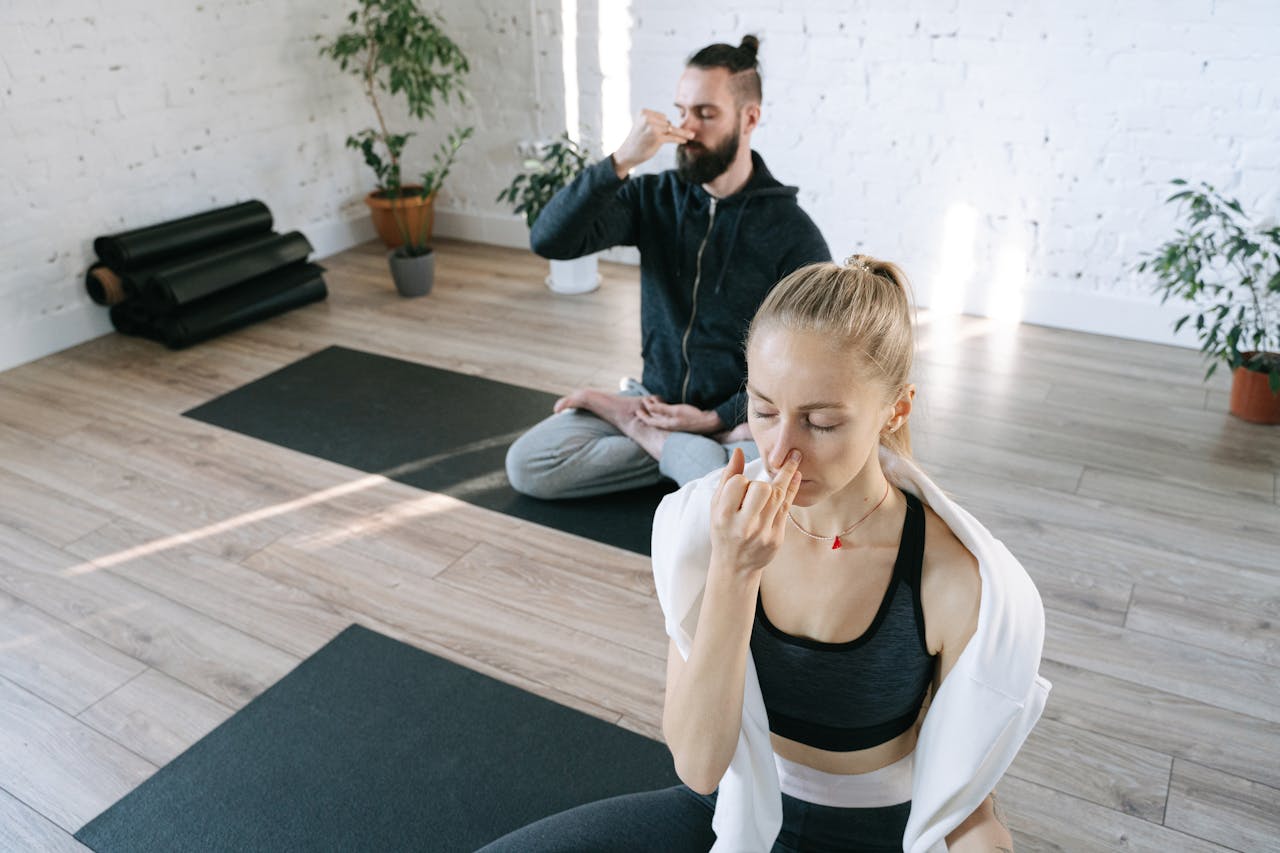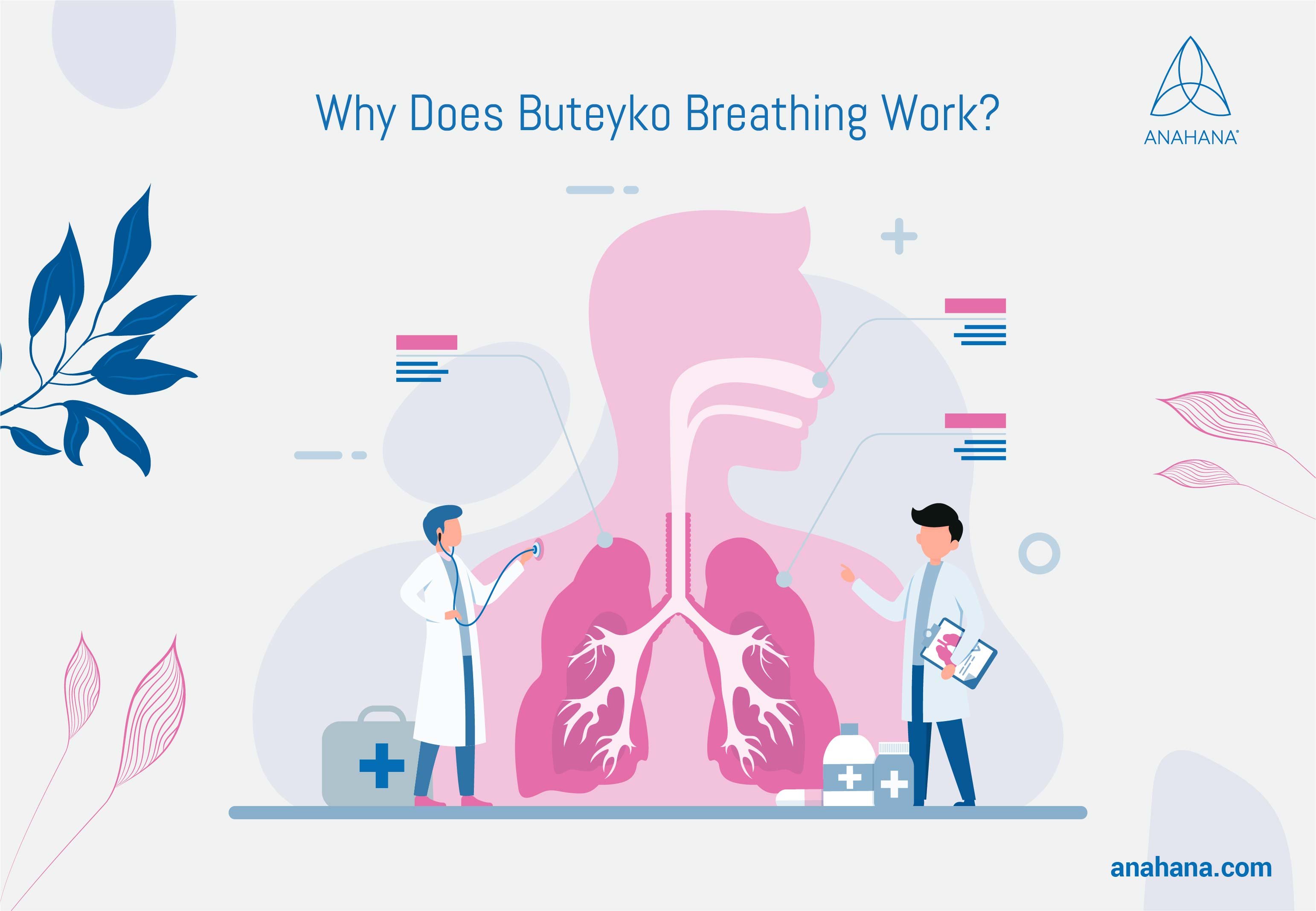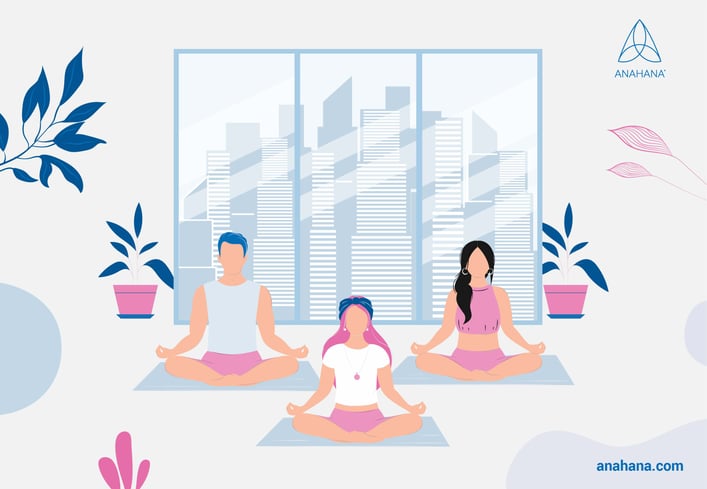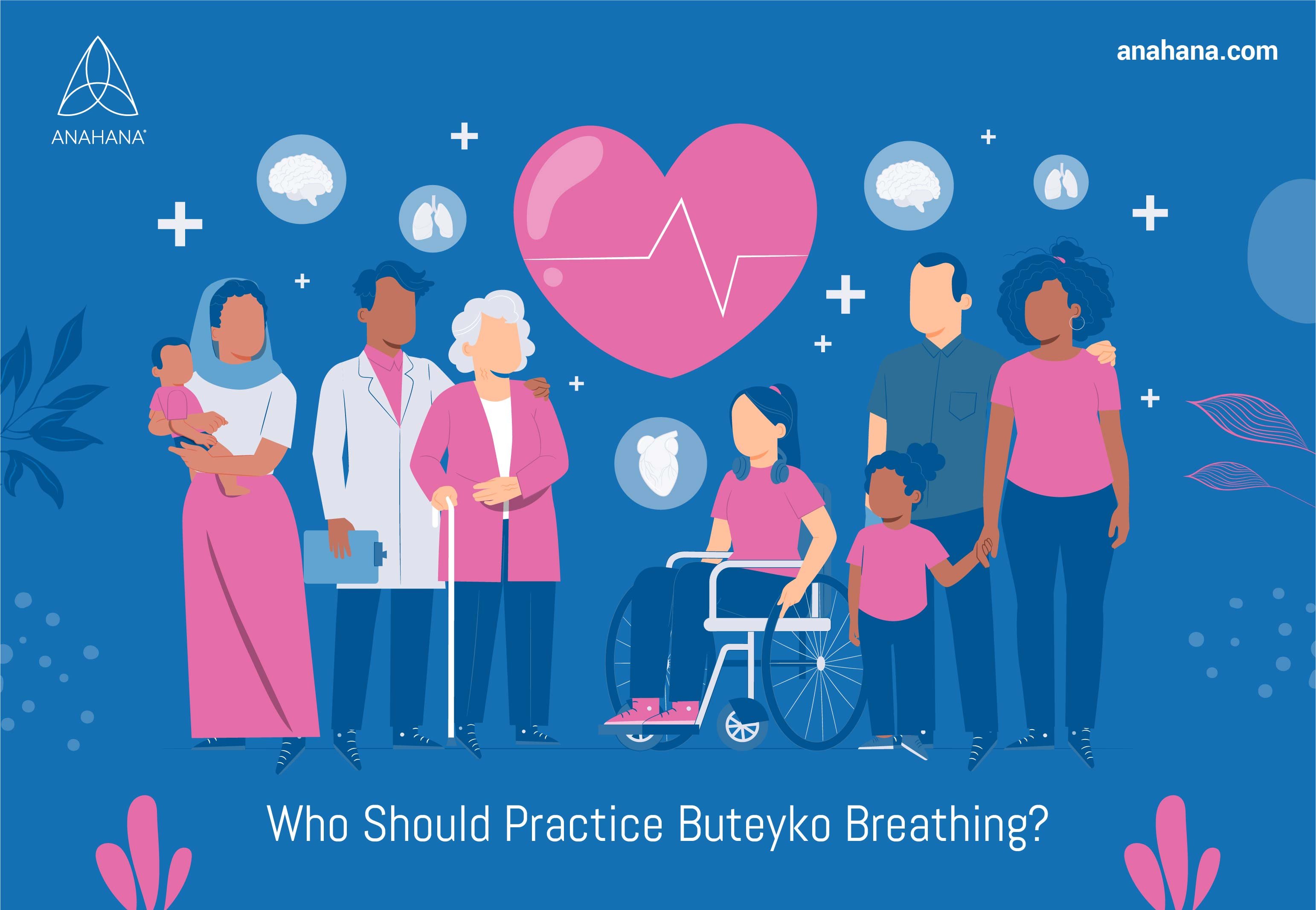
Table of Contents
Step into the world of Buteyko breathing, a holistic revelation crafted by Dr. Konstantin Buteyko. Centered around the natural art of nasal breathing and the power of reduced breathing, this method isn't just a practice—it's a gateway to optimized oxygenation, relief from respiratory ailments, and a leap towards peak health
The perfect person breathes as if they are not breathing. - Patrick McKeown
Buteyko Breathing Explained
Buteyko breathing is a method that advocates reduced respiration rate. The goal is to decrease the breaths taken per minute and promote nasal breathing.
Notably, the technique stresses quiet, effortless breathing akin to the kind exhibited by healthy individuals. Unique to this breathing method is the control pause post-exhalation, a tool to train the respiratory system to take in less air and achieve a serene rhythm.
The approach aligns closely with yogic breathing exercises, harmonizing the mind and body through controlled pauses, which evaluate respiratory capacity and harness the health benefits of the oxygen dissociation curve.
The Historical Footprints of Buteyko
Tracing its roots back to 1956, Dr. Konstantin Buteyko observed distinct breathing patterns between healthy and unhealthy individuals.
He pinpointed that the latter often resorted to mouth breathing and had a faster breathing rate, especially while asleep.
Consequently, Dr. Buteyko developed a breathing technique emphasizing a balanced inhalation-to-exhalation ratio.
This breathing retraining has since shown potential in alleviating asthma symptoms, panic attacks, and sleep disorders.
The Science Behind Buteyko Breathing Technique

Often under stress, people should take a deep breath. Ironically, this tends to result in fast mouth inhalation, drawing primarily from the upper chest, which expels more oxygen than is taken in.
This shallow breathing disrupts gas exchange, depleting carbon dioxide and triggering the stress reaction. At its peak, this evolves into a panicked hyperventilation, where our lungs feel empty.
Breathing into a paper bag, a common remedy, replenishes lost carbon dioxide, normalizing blood pH and respiration rate. Such insights birthed Dr. Buteyko’s Carbon Dioxide Theory of Disease.
Carbon Dioxide's Significance
Far from being just a waste product, carbon dioxide plays a pivotal role in various bodily functions.
At the microscopic level, this lack of carbon dioxide disrupts vital processes, notably the Krebs cycle, essential for energy production and internal equilibrium. Hence, one can avert chronic hyperventilation by modulating breathing volume and patterns.
A Deeper Dive into Oxygen Dissociation Curve
Oxygen, vital for our cells, hitchhikes on hemoglobin in our red blood cells. The oxygen dissociation curve illustrates the optimal oxygen concentration for efficient bodily functions.
Shifts in this curve can have significant implications. For instance, a study by Schmidt et al. (1988) revealed that consistent ergometer training enhanced hemoglobin oxygen affinity, increasing oxygen supply to muscles and organs.
Those acquainted with rowing can attest to the relief achieved through deep, slow nasal breaths.
Is Buteyko Breathing Effective?
While Buteyko breathing exercises have physiological benefits, the precise mechanisms remain a subject of scientific discussion.
Although the carbon dioxide theory doesn't fully explain these physiological changes, ongoing research suggests various alternative explanations.
Primarily, the correlation between anxiety and breath control offers a plausible rationale for the technique's efficacy, especially among asthmatics.
The frequent connection between anxiety-induced asthma attacks and difficulty regaining breath underscores the importance of breath control.
The Asthmatic's Breathing Challenge
Asthma presents as a chronic narrowing of airways, often managed with corticosteroids and rescue inhalers like albuterol for emergencies.
Asthma attacks, marked by wheezing and coughing, can be a daunting experience—rescue inhalers dilate the airways, restoring equilibrium in lung function.
Buteyko's Approach to Treating Asthma Symptoms
Bruton and Lewith's 2005 study proposed a unique theory: Buteyko breathing's effectiveness might stem from its emphasis on nasal over mouth breathing.
One significant trigger for asthma attacks is inhaling allergens, causing bronchoconstriction. This narrowing prompts mouth breathing, inadvertently intensifying hyperventilation and improving asthma symptoms.
With a higher propensity for mouth breathing, people with asthma might be more susceptible to these attacks.
However, the Buteyko technique, focusing on nasal breathing, can equip asthmatics with strategies to manage and even reduce the frequency of severe asthma attack episodes.
Guide to Buteyko Breathing Method

Buteyko Breathing Basics
An essential method that focuses on cultivating a controlled and optimal breathing pattern.
- Step 1: Start in a quiet, relaxed environment. Sit upright with feet flat on the ground.
- Step 2: Place one hand on your chest and the other on your abdomen to feel the movement as you breathe.
- Step 3: Initiate with a relaxed nasal exhale andy a comfortable and controlled inhale.
- Step 4: Gradually reduce the volume of each breath, focusing on calm and rhythmic patterns.
- Step 5: Every few breaths, practice a control pause: after a relaxed exhale, pinch your nose and time the comfortable duration before you feel the need to breathe in.
- Step 6: Aim to increase the duration of the control pause over time, which indicates enhanced breath control.
- Step 7: Close the session with a few minutes of relaxed breathing. Reflect on the calmness and clarity achieved during the practice.
Nose Unblocking Exercise
A beginner-friendly method tailored to promote nasal breathing and alleviate stress.
- Step 1: Begin seated; direct focus to nasal breathing.
- Step 2: Identify the more congested nostril and close it.
- Step 3: Breathe solely through the free nostril, noting the air's coolness and warmth upon entry.
- Step 4: Tune into bodily reactions, like the mouth's dryness or increased saliva.
- Step 5: Aim for subtle, almost invisible breathing to engage the calming parasympathetic nervous system.
- Step 6: Introduce the control pause by pinching the nose after an exhale.
- Step 7: Once you feel the need, release and take a gentle inhale. Relish the calming effect.
Normalizing Breathing Exercise
An adaptable breathing exercise designed to regulate and optimize your breathing pattern.
- Step 1: Choose your preferred technique and locate a quiet place.
- Step 2: Concentrate on deliberate nasal breathing practice.
- Step 3: Monitor the breathing pace and depth depending on your chosen method.
- Step 4: Observe the cool ingress and warm egress of the air.
- Step 5: Slow down your breathing rate to a comfortable limit.
- Step 6: The goal: achieve barely noticeable chest and abdomen movement.
- Step 7: Sustain this refined breathing style for several minutes.
The techniques emphasized in the Buteyko method offer a blend of traditional wisdom and contemporary scientific insights.
By regularly practicing these exercises, especially individuals with asthma can hope to enhance their breath control, mitigate anxiety, and elevate their quality of life.
The Benefits of Buteyko

While the previously mentioned study highlighted specific benefits for athletes, who practiced buteyko breathing are expansive. By fostering regular breathing patterns, Buteyko aids in the following:
- Reducing asthma symptoms.
- Improving sleep quality, especially in cases of obstructive sleep apnea.
- Enhancing lung function and capacity.
- Mitigating the effects of chronic obstructive pulmonary disease (COPD).
- Improves blood circulation
Risks and Contraindications
Despite its benefits, it's pivotal to approach Buteyko with a degree of caution:
- Medical Conditions: For some, frequent hyperventilation could signify underlying medical conditions like panic disorders, heart complications, or even brain tumors. It's vital to consult a physician if these episodes are unfamiliar.
- Blood Pressure Concerns: Individuals diagnosed with high blood pressure should tread carefully. Buteyko's controlled pause can momentarily spike blood pressure, presenting potential risks.
- Asthma and Buteyko: While Buteyko is a recognized complementary therapy for asthma management, asthmatics should maintain open communication with their healthcare provider before modifying their treatment regimen or initiating Buteyko.
Buteyko breathing training is a promising technique for enhancing physical and mental well-being.
However, individual medical histories and needs must always be front and center, making informed decisions paramount.
Frequently Asked Questions About Buteyko Breathing
How can Buteyko breathing influence health and fitness?
Following a six-week Buteyko training, university-aged footballers witnessed an increase in aerobic endurance and reduced resting heart rate and blood pressure.
Hence, Buteyko is pivotal in enhancing cardiovascular health and is suitable for elite athletes and those aiming for general health betterment.
Who Stands to Benefit from Buteyko?
In essence, everyone can! The Buteyko breathing technique serves as a conduit, linking the mind, body, and breath. By deepening one's understanding of respiratory patterns, Buteyko exercises offer a path to alleviate anxiety symptoms and temper the body's stress responses.
Can Buteyko augment sleep quality?
Patrick McKeown, a Buteyko authority, emphasizes the correlation between breathing patterns and sleep. He suggests an ideal respiratory rate during slumber is six breaths per minute.
Deviations can lead to sleep-related respiratory disorders. Faster breathing might result in hyperventilation, mouth breathing, and snoring. Practicing Buteyko ensures rhythmic nasal breathing, thwarting sleep disturbances.
Why is nasal breathing preferred?
Nasal breathing practice warms the incoming air, preventing potential upper airway damage that cold air from mouth breathing can cause.
The nasal passage's mucous membrane also captures and eradicates inhaled pathogens, bolstering our immunity.
Nasal breathing also combats sleep apnea and other airway disorders. Training to breathe nasally during wakefulness promotes similar habits during sleep.
What does 'control pause' signify in Buteyko?
Post-exhalation, there's a natural pause before the next inhalation, termed 'control paus.'.
To practice, after a short breath out, pinch your nose and measure your breath-hold duration until the onset of air hunger, a pivotal Buteyko goal.
It emphasizes prolonging the control pause and delaying the air hunger phase. Overextending the break might lead to a sharp subsequent inhalation, resembling hyperventilation and counteracting the practice.
How does deep breathing work?
Deep breathing involves the diaphragm's full contraction. Located beneath the ribs, the diaphragm, upon contracting, creates a vacuum that draws air into the lungs.
A complete deep breath allows maximum lung inflation. To practice, place one hand on your chest and another on your abdomen.
During inhalation, notice the abdominal expansion. Remember to maintain a steady, unhurried pace to avoid hyperventilation.
What is the difference between Buteyko, Wim Hof, and Pranayama breathing techniques?
Here is a breakdown of the three different breath-holding techniques of wim hof method, buteyko and pranayama breathing:
Buteyko Breathing
- Origin: Developed by Ukrainian doctor Konstantin Buteyko in the 1950s.
- Purpose: Treat asthma, anxiety, and dysfunctional breathing patterns.
- Technique: Focuses on nose breathing, slowing breath rate, and reducing breath volume. Utilizes "control pause" to measure progress.
- Origin: Created by Dutch athlete Wim Hof.
- Purpose: Boost physical and mental performance, stress response, and cold tolerance.
- Technique: Combines controlled hyperventilation with cold exposure (like cold showers).
- Origin: Ancient India, tied to yoga and Ayurveda traditions.
- Purpose: Spiritual and physical purification.
- Technique: Includes a variety of exercises such as Anulom Vilom (alternate nostril breathing) and Kapalbhati (rapid exhalation).
What are some additional breathing exercises?
There are many different breathing exercises that one may wish to practices, including:
- Humming bee breath
- Kapalbhati breathing
- Lion’s breath
- Diaphragmatic breathing
- Box breathing
- Tummo breathing
References
Breathing into a paper bag can calm anxiety attack | UCLA Health
https://pubmed.ncbi.nlm.nih.gov/31130270
What Is The Buteyko Method? - Buteyko Breathing Exercises + Techniques
Deep VS Shallow Breathing - Causes, Dangers, Benefits, Exercises - Buteyko Clinic
Reducing Insomnia - Treatment With The Buteyko Method
Disclaimer
The contents of this article are provided for informational purposes only and are not intended to substitute for professional medical advice, diagnosis, or treatment. It is always recommended to consult with a qualified healthcare provider before making any health-related changes or if you have any questions or concerns about your health. Anahana is not liable for any errors, omissions, or consequences that may occur from using the information provided.

By: Clint Johnson
Clint is the driving force and founder of Anahana. Clint teaches Yoga, Pilates, mindful breathing, and meditation, catering to a global community of students and teachers.
